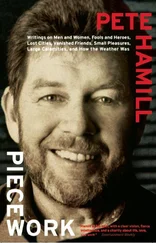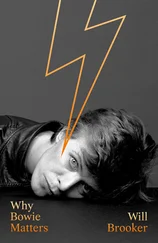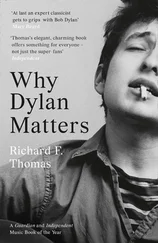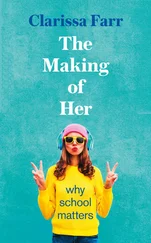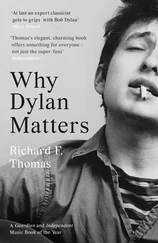Luciano claimed later, in a posthumous “autobiography,” that one of the purposes of the Havana assembly was to congratulate young Frank Sinatra for his great accomplishments and to allow Sinatra to thank them for all their help. This seems preposterous; why risk calling attention to their own clandestine congress by bringing a man so famous to a public place? It’s more likely that young Fischetti was running his own game: trying to impress his elders by producing Frank Sinatra and to impress Sinatra by displaying his own intimate connections to some legendary mobsters. Fischetti seems to have introduced Sinatra to all of them. There was one report that Sinatra got up to sing in the nightclub of the Hotel Nacional. A few days later he left to meet his wife on St. Valentine’s Day in Mexico City.
That should have been that; as Sinatra was learning, that is almost never that. Scripps Howard columnist Robert Ruark, who was in Havana, learned about Luciano’s presence from Narcotics Bureau boss Harry J. Anslinger, a bumbling fanatic who was engaged in a turf war with J. Edgar Hoover of the FBI. Anslinger (or one of his agents) underlined Sinatra’s part in the “convention.” Ruark, a macho right-winger who despised Sinatra’s politics, opened up with all his rhetorical guns. He wrote a column that said, in part:
“Mr. Sinatra, the self-confessed savior of the country’s small fry, by virtue of his lectures on clean living and love-thy-neighbor, his movie shorts on tolerance, and his frequent dabblings into the do-good department of politics, seems to be setting a most peculiar example for his hordes of pimply, shrieking slaves, who are alleged to regard him with the same awe as a practicing Mohammedan for the Prophet.”
There was an immense scandal. Lucky Luciano! Frank Sinatra! The sin city of Havana! It was a splendid opportunity to attack Sinatra’s politics as more than naive, as probably devious. All the old anti-Italian prejudices rose again, clothed, as always, in virtue. Sinatra said, “I was brought up to shake a man’s hand when I am introduced to him without first investigating his past.” But the damage was done. The Mob image would be part of the rest of his life. Thirty years later he admitted to me about the Havana trip: “It was one of the dumbest things I ever did.” But he did not elaborate.
There would be other Mob stories over the years: his long friendship with Sam (Momo) Giancana of Chicago, his ease with West Coast hoodlum Mickey Cohen, his connections with some members of the Patriarca family of Rhode Island. He certainly played Las Vegas in the heyday of the hoodlums and helped make it one of the nation’s most lucrative adult playgrounds. He played Mob joints in other parts of the country, sometimes without a fee. At every Sinatra concert I attended over the years, I would see known wise guys, smoking cigars, their diamond pinkie rings glittering in the light. At concerts in New York they brought their wives; in Vegas they brought their girlfriends. As late as 1976 Sinatra posed for a photograph in his dressing room at the Westchester Premier Theater with Brooklyn Mob boss Carlo Gambino and a group of other hoodlums. It didn’t matter that they wanted the photograph to impress their friends and children, it didn’t matter that they were among Sinatra’s most awestruck fans; they had access.
It’s absurd to believe that the Mob had made Sinatra a star; if that was possible, they’d have made two hundred other stars, and they made absolutely none. But Sinatra certainly knew Mob guys, was often amused by them, and knew that they could be dangerous. When we were talking about doing his book in the mid-1970s, I told him I’d have to discuss three subjects with him: his politics, his women, and the Mob. He shrugged and said that the first two were no problem. “But if I talk about those other guys, someone might come knocking at my fucking door.” A few days later he called and said, “Hey, what the hell. All the guys I knew are dead anyway.” On another occasion he elaborated about his friendships with hoodlums:
“Did I know those guys? Sure, I knew some of those guys. I spent a lot of time working in saloons. And saloons are not run by the Christian Brothers. There were a lot of guys around, and they came out of Prohibition, and they ran pretty good saloons. I was a kid. I worked in the places that were open. They paid you, and the checks didn’t bounce. I didn’t meet any Nobel Prize winners in saloons. But if Francis of Assisi was a singer and worked in saloons, he would’ve met the same guys. That doesn’t make him part of something. They said hello, you said hello. They came backstage. They thanked you. You offered them a drink. That was it.” He paused. “And it doesn’t matter anymore, does it? Most of the guys I knew, or met, are dead.”
But in 1948–49, as he moved inexorably toward the Fall, the Mob was becoming a heavier piece of his baggage. There were more severe, if less melodramatic, problems. His marriage was in constant turmoil; Nancy was holding on, hoping to wait him out as he dallied elsewhere; Sinatra wanted his total freedom. The move to California had put a continent between him and his parents, but the city of New York would serve Sinatra for another half-century as his personal version of the Old Country. It would always be as full of magic as it had been when he stood alone on the piers of Hoboken. If he felt the urge, he wanted the freedom to go back — alone. To move through the New York night. Without a wife. Without his children. The marriage was Hoboken, and Hoboken was not magic.
Later, most people who were sympathetic to both parties said that Sinatra had grown and Nancy had not, that he was out in the big world, adding sophistication and social ease to his style, while Nancy remained imprisoned by the parochial codes of New Jersey. Sinatra once told a close friend about the night he realized the marriage was over. He had to go to a business meeting in a Los Angeles restaurant. It was raining hard. When he reached the door, Nancy called after him, “Frank, don’t forget your galoshes.”
That story might be apocryphal; it too neatly fits the story of Sinatra’s flight from the middle-class values of Hoboken. But many of the others were not. There were constant arguments over money, houses, the children, relatives, other women. He and Nancy separated at least once, in 1948, but reconciled after a few weeks. With very little discretion, Sinatra romanced a variety of women, including Marilyn Maxwell and Lana Turner; and then in 1949 he met Ava Gardner.
III . The tale of Frank Sinatra and Ava Gardner has been told many times, most effectively and honestly by Ava herself in her autobiography (Ava) . At one point, the whole world seemed to know the story of the romance, Sinatra’s divorce, the marriage to Ava, the mutual jealousies, the drunken quarrels, the snarling fights with photographers and reporters. At one point, Sinatra even tried to kill himself. In the sorry narrative that constitutes the Fall, he would lose his movie contract, his radio show, his recording contract, and his agents. Desperate for money as the various contracts began running out, needing the validation of an audience, he began taking as many live engagements as possible. And then he lost his voice. That was the most terrifying event of all. It happened in the spring of 1950, near the end of an eight-week engagement at the Copacabana nightclub in New York, and he described the night to Arlene Francis many years later:
“I was doing three shows a night, five radio shows a week, benefit performances, and recording at the same time. And then I opened at the Capitol Theater toward the end of the engagement. I went out to do the third show [at the Copa] at about half past two or quarter to three in the morning, and I went for a note, and nothing came out. Not a sound came out. And I merely said to the audience, as best I could, ‘Good night.’”
Читать дальше



